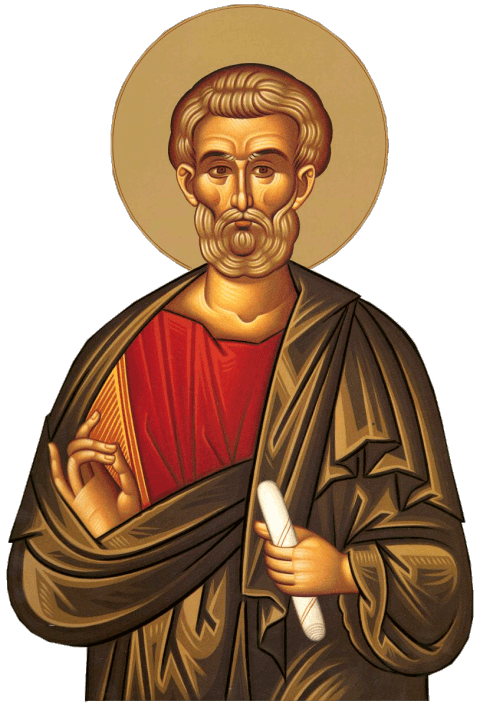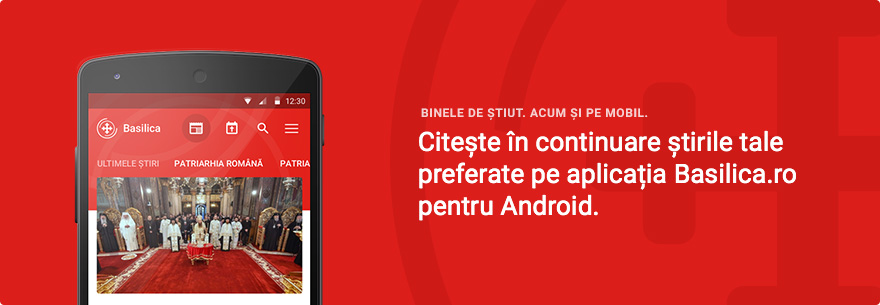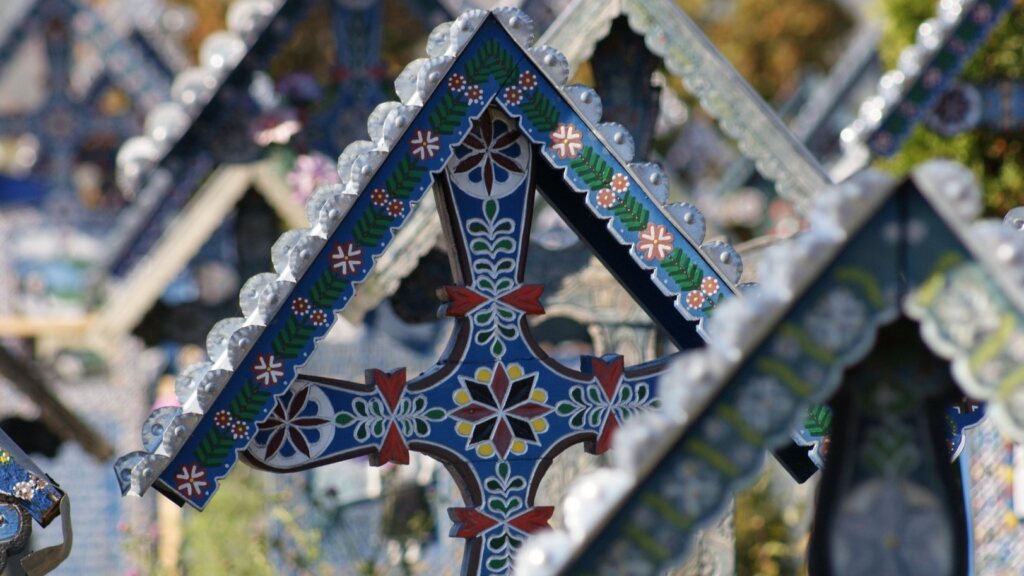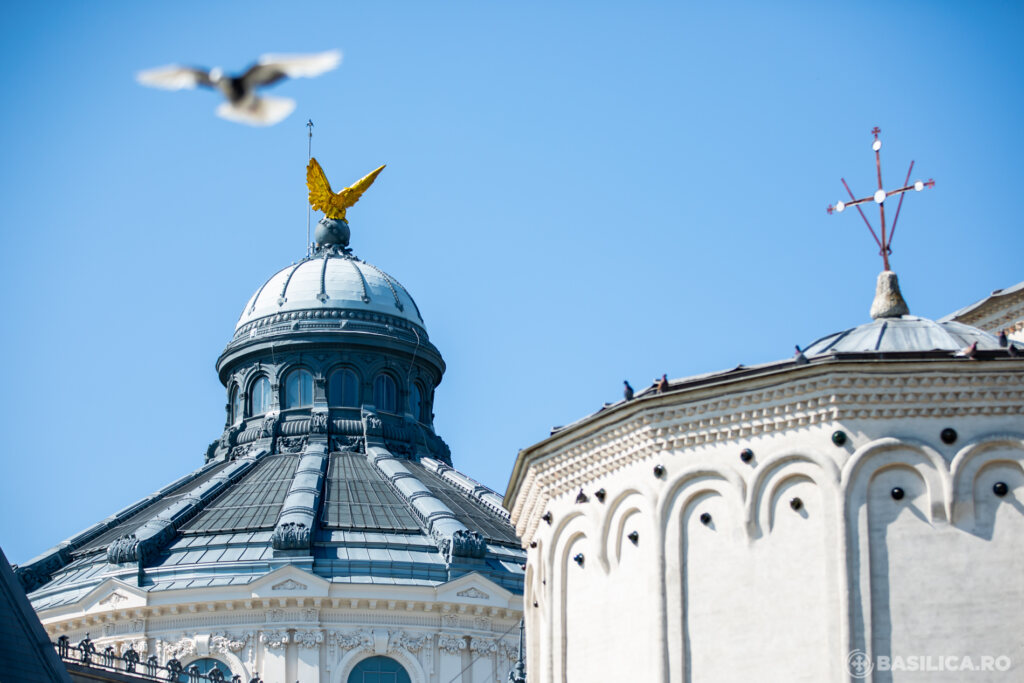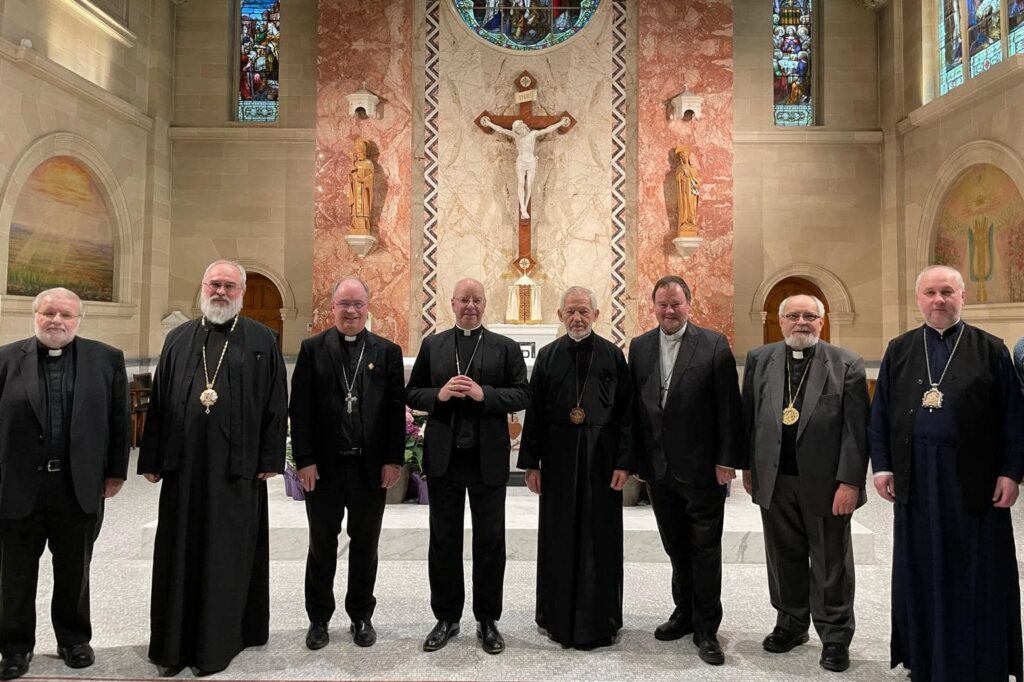The Holy Apostle Matthias of the Seventy
He was born at Bethlehem of the Tribe of Judah. From his early childhood, he studied the Law of God under the guidance of Saint Simeon the God-Receiver (February 3).
When the Lord Jesus Christ revealed Himself to the world, Saint Matthias believed in Him as the Messiah followed constantly after Him and was numbered among the Seventy Apostles, whom the Lord “sent them two by two before His face” (Luke 10:1).
After the Ascension of the Savior, Saint Matthias was chosen by lot to replace Judas Iscariot as one of the Twelve Apostles (Acts 1:15-26). After the Descent of the Holy Spirit, the Apostle Matthias preached the Gospel at Jerusalem and in Judea together with the other Apostles (Acts 6:2, 8:14). From Jerusalem, he went with the Apostles Peter and Andrew to Syrian Antioch and was in the Cappadocian city of Tianum and Sinope. Here the Apostle Matthias was locked into prison, from which he was miraculously freed by Saint Andrew the First-Called.
The Apostle Matthias journeyed after this to Amasea, a city on the shore of the sea. During a three year journey of the Apostle Andrew, Saint Matthias was with him at Edessa and Sebaste. According to Church Tradition, he was preaching at Pontine Ethiopia (presently Western Georgia) and Macedonia. He was frequently subjected to deadly peril, but the Lord preserved him to preach the Gospel.
Once, pagans forced the saint to drink a poison potion. He drank it, and not only did he himself remain unharmed, but he also healed other prisoners who had been blinded by the potion. When Saint Matthias left the prison, the pagans searched for him in vain, for he had become invisible to them. Another time, when the pagans had become enraged intending to kill the Apostle, the earth opened up and engulfed them.
The Apostle Matthias returned to Judea and did not cease to enlighten his countrymen with the light of Christ’s teachings. He worked great miracles in the Name of the Lord Jesus and he converted a great many to faith in Christ.
The Jewish High Priest Ananias hated Christ and earlier had commanded the Apostle James, Brother of the Lord, to be flung down from the heights of the Temple, and now he ordered that the Apostle Matthias be arrested and brought for judgment before the Sanhedrin at Jerusalem.
The impious Ananias uttered a speech in which he blasphemously slandered the Lord. Using the prophecies of the Old Testament, the Apostle Matthias demonstrated that Jesus Christ is the True God, the promised Messiah, the Son of God, Consubstantial and Coeternal with God the Father. After these words the Apostle Matthias was sentenced to death by the Sanhedrin and stoned.
When Saint Matthias was already dead, the Jews, to hide their malefaction, cut off his head as an enemy of Caesar. (According to several historians, the Apostle Matthias was crucified, and indicate that he instead died at Colchis.) The Apostle Matthias received the martyr’s crown of glory in the year 63.
Troparion — Tone 3
O Holy Apostle Matthias, / intercede with the merciful God / to grant our souls forgiveness of transgressions.
The Ten Holy Martyrs who suffered for the icon of Christ
The Martyrs Julian, Marcian, John, James, Alexius, Demetrius, Photius, Peter, Leontius, Maria the Patrician, the Protospatharios (“Sword-Captain”) Gregory and Others suffered for holy icons in the year 730 under the Iconoclast emperor Leo the Isaurian (717-741). The emperor deposed the holy Patriarch Germanus (715-730) from the patriarchal throne and sent him off to prison, raising up onto the patriarchal throne the iconoclast Athanasius (730-753).
By decree of the emperor, all icons were to be confiscated from homes and churches and then destroyed. At Constantinople from the time of the holy Emperor Constantine the Great (324-337) there was over the so-called “Copper Gates” a wonderworking icon of the Savior, made of copper.
The emperor and heretical Patriarch Anastasius gave orders to seize this icon. The gathered crowd became outraged at this sacrilege. In the crowd was the Patrician Maria, a woman of illustrious family, who with many others rushed to the ladder and pulled it from the wall to keep the soldier from touching the icon. The ladder came down, and the soldier standing on it fell to his death. This occurred on January 19, 730. The Protospatherios (“Sword-Captain”) Gregory and the nun Saint Theodosia (May 29) also took part in the defense of the icon.
Learning of this, the emperor executed a multitude of the faithful, the names of whom are known only to the Lord. The Protospatherios Gregory also received a martyr’s death. Some of the Orthodox are known, however: Julian, Marcian, John, James, Alexius, Demetrius, Leontius, Photius and Peter, who were locked up in prison and kept there for about eight months, each day receiving 500 blows. In these torments they remained alive by the power of Christ and bravely endured their sufferings.
By order of the emperor they were burned with a red-hot iron and their heads cut off. Saint Maria the Patrician, who had not been locked up in prison, learning about the executions, voluntarily accepted a martyr’s death. The bodies of the martyrs were buried in a coastal area near the church of the holy Martyr Theodore, and were discovered incorrupt 139 years later.
Troparion — Tone 4
Your holy martyr Julian and his companions, O Lord, / through their sufferings have received incorruptible crowns from You, our God. / For having Your strength, they laid low their adversaries, / and shattered the powerless boldness of demons. / Through their intercessions, save our souls

